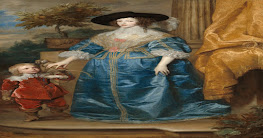Welcome to my latest blog post. Last week I looked at the interesting life of Jeffrey Hudson, the 17th Century court dwarf. This week I have decided to examine the royal court more closely and see why so many disabled people could be found there. Unlike some of my other posts, I will not be focusing on any particular time, person, or place. Instead, I will be talking about royal courts throughout time. The king (or queen) had an important role to play in the makeup of the royal court, obviously, so I will begin by surmising why they chose disabled people.
Kingship and Disability: Are there Similarities?
I’m going to start by stating the obvious. Throughout history kings and queens have been powerful people. The disabled people who served in their courts on the other hand were the lowest of the low. How then could there be any similarities between the two? In many Christian countries, kings were thought of as being close to God, as well as being good and just. Therefore, it was important for them to be surrounded by positive energy. I wonder did they try meditation? You may remember from previous posts such as The Curse of The Evil Eye and Disability vs The Evil Eye, that the Greeks and Romans believed disabled people were able to ward off evil by just being their plain old deformed selves.
As usual, I am attacking this topic with gigantic brush strokes, but I am fairly confident that the overall point is solid. As you would expect, rulers, whose job it was to inspire confidence in their people, did not want to be plagued by evil spirits. Now that I think about it, I don’t think anyone would want to be plagued by evil spirits. To stop this from happening, the ruler would fill his/her court with deformed people to literally surround themself with protection.
The Role of Religion
So, that strategy of surrounding yourself with deformed people seemed to work well against the evil eye. However, why did the practice continue after popular belief in the eye faded? Part of the answer is probably that deformed courtiers became commonplace and they just forgot why they were there in the first place. Another probability, which is quite depressing, is that the deformities themselves were seen as funny and entertaining to look at. As the monarch was the most powerful person in their kingdom, it was only fair that they had the coolest stuff, right? If the coolest stuff happened to be people with physical abnormalities, then so be it.
There were more important reasons why monarchs from the Medieval period onwards filled their courts with disabled people. While the evil eye and evil spirits were not very prominent, God certainly was! When it came to disabled people in royal courts, God was front and centre in the minds of monarchs. For a long time, the Christian churches held vast amounts of power in Europe. As such, if a monarch wanted to be successful, they needed the support of the church.
I don’t think I have touched on this before but being charitable towards disabled people was important to the church. Therefore, by including disabled people in their courts, monarchs would gain the approval of the church, as they had rescued the disabled person from a life of poverty. This was certainly true for Jeffrey Hudson who I discussed last week.
The Role of the Fool
There were also certain qualities which some disabled people possessed, which meant that it was important they stayed close to the monarch. This is best seen when looking at court fools. Their role was to entertain the monarch and their guests by telling jokes and generally clowning around. It has been argued that court fools were actually people with intellectual disabilities. You see, people who now would be diagnosed with intellectual disabilities were referred to as ‘natural fools’, predominantly in the Medieval and Tudor periods. They were thought to be insensible of their actions, or more generally incapable. This gave them an aura of innocence and pureness. They were deemed to be untainted by the ills of humanity and closer to God than anybody else.
If in ancient times, deformed slaves could protect the ruler from evil, Medieval and Early Modern monarchs could be brought closer to God by the disabled people in their court.
To keep up to date with my latest blog posts, you can like my Facebook page, or follow me on Twitter. You can find them by clicking the relevant icons in the sidebar.
Next time, I will be writing a post on a different topic. I
am going to leave it as a surprise! I guess you're going to have to come back to discover what it is.
The Wheelchair Historian
Further Reading
Lipscomb, Suzannah, ‘All the King’s Fools’, Published in History Today Volume 61 Issue 8 August 2011, https://www.historytoday.com/archive/all-king%E2%80%99s-fools Accessed: 5th March 2021.
Maitland, Karen, ‘What was life like for a court jester?’ https://www.historyextra.com/period/medieval/what-was-life-like-for-a-court-jester/ Accessed: 5th March 2021.
Trentin, Lisa, 2011. ‘Deformity in the Roman Imperial Court’, Greece & Rome, 58, No. 2, 195-208 Stable URL: http://www.jstor.org/stable/41306156 [Accessed: 19th November 2017].

